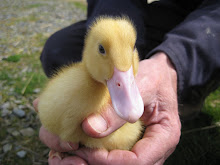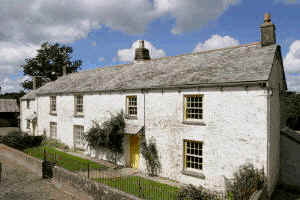 I've had and used a little 20 hen egg incubator for some years; it takes just 15 duck eggs or 9 goose eggs, so my hatches have always been small, but now I have pumped up the volume a bit with one that takes 35 duck eggs (the automatic turning cradle won't accommodate a goose egg).
I've had and used a little 20 hen egg incubator for some years; it takes just 15 duck eggs or 9 goose eggs, so my hatches have always been small, but now I have pumped up the volume a bit with one that takes 35 duck eggs (the automatic turning cradle won't accommodate a goose egg).But with increased volume comes increased risk and increased potential for disaster. If something goes wrong (power failure, unnoticed cracked egg, temperature variations etc) you end up spoiling a larger potential hatch. The phrase putting all your eggs in one basket has never rung so true!
My last hatch was not a success; I hadn't noticed that a batch of bought in Indian Runner duck eggs had rather fragile shells, and as the cradle turned it cracked an egg, and whatever evil humours poured forth ended up contaminating all but six of the fertile eggs.
Bummer.
But yesterday I set another batch of my Aylesbury duck eggs and my neighbour's Cayugas to hatch, and in a week I will candle them, and hopefully if I am properly observant at my daily checks, there will be life in 28 days.
The photo is of three week old goslings, Aylesburys and Cayugas that I put out on grass for the first time yesterday.

















3 comments:
Thanks for this very useful info mopsa - my ignorance in all things incubators is great - could you tell me what 'candle' means - is it when you turn the heat up?
Your three week olds look very healthy and bonny.
Oops! Should have linked/explained. Candling is when you put a light against an egg about one week into incubation to see if it is fertile or not. You then dump the clear eggs and carry on with the fertile ones. There is some useful stuff here , here . and although this is about parrot eggs, the pictures are very helpful here
Brilliant - fascinating stuff and excellent links, thank you.
I'll now have to watch it done in real life.
Post a Comment